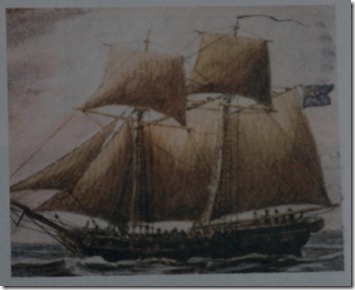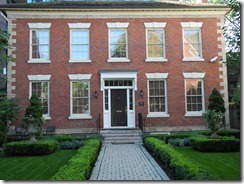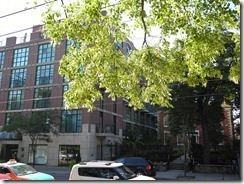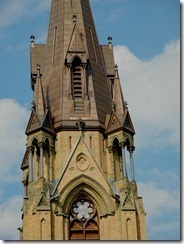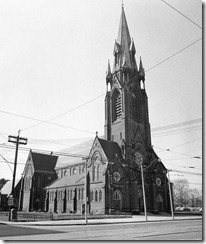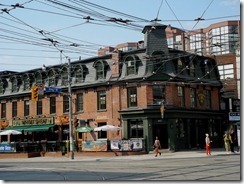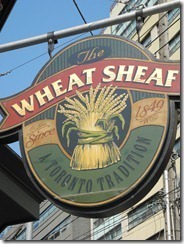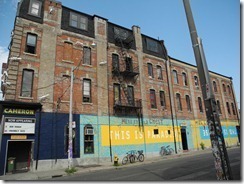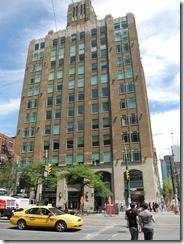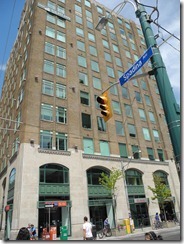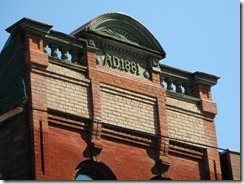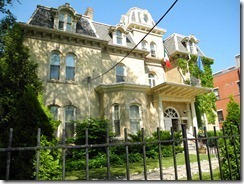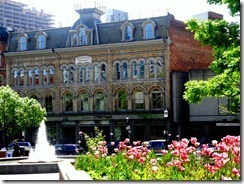On Sunday 19 August, the Toronto Star carried a story about a man’s search for the HMS Speedy, a British sailing ship that sunk in a storm on Lake Ontario in October of 1804. The article immediately caught my attention as I am keenly interested in Canadian history, especially if it relates to Toronto. The writer of the article, Carola Vyhnak outlined the 22-year search of Ed Burtt to find the wreck and his frustrating attempts with government officials to retrieve artefacts from the vessel to place in a museum. The article was on page A9 in the Star, and it excellently outlines the struggles of Ed Burtt.
The Speedy was an 80-foot warship that had been built by the British in 1797, because of fear of war with the United States. On 7 October, a murder trial was to begin in Newcastle, about 150 kilometres east of York. The accused was Ogetonicut, a member of the Chippewa tribe. His brother, Whistling Duck, had been killed by a settler, and he took his revenge on John Sharp, another farmer. The second murder was committed at Ball Point on Lake Scugog, where Sharp was in charge of a trading post for furs belonging to Messrs. Farewell. Governor Peter Hunter (who had established the St. Lawrence Market the same year ) had promised that the slayer of Whistling Duck would be punished, but twelve months had elapsed and nothing had been done. Finally, the entire Chippeawa Tribe, with their chief – Wabbekisheco – arrived by canoe in York. They encamped on Gibraltar Point on the peninsula on front of the town of York (Toronto).
Ogetonicut was with the tribe, and a detachment of soldiers was sent to Gibraltar Point to arrest him. Chief Wabbekisheco, trusting the justice system, delivered Ogetonicut to the soldiers, who transported him across the bay and placed him in the jail at York. It was subsequently discovered that because the site of the murder was within the District of Newcastle, the case must be tried in that district. This necessitated that the high-ranking members of York’s judicial system travel to Newcastle to participate in the trial. Roads were primitive or non-existent in that decade, and the easiest method of travelling was to sail along the shore of the lake.
On the October morning that the HMS Speedy set forth from York, the weather was threatening and the captain objected to the sailing. However, Governor Hunter ordered them to continue. On board there were thirty-nine persons. There were about twenty crew members, along with Judge Cochrane, Solicitor-General Grey, Mr. Angus Mcdonell (Sheriff of York), Mr. Fishe (the High Bailiff), Ogetonicut (the accused), two interpreters Cowen and Ruggles), several witnesses, and Mr. Herchmer, a merchant at York. The vessel was known not to be particularly seaworthy, and the residents of York never knew where it foundered. In his book “Toronto of Old,” (published 1873) Henry Scadding wrote : “. . . no trace was ever afterwards discovered.”
The only official to have escaped the tragedy was Mr. Weeks, who decided to travel to Newcastle by horseback.
Now, in 2012, the wreck has been discovered. Its fate was sealed when it struck a submerged pinnacle of rock, which in the darkness tore a huge hole in her hull.
Other posts about Toronto’s Heritage
The 1847 Farr House at 905 Queen St. W, tucked in beside a modern condo.
St. Mary’s Church at Bathurst and Adelaide Streets
The Wheat Sheaf Tavern at Bathurst and King Streets.
https://tayloronhistory.com/2012/08/06/torontos-unique-wheat-sheaf-tavern/
The site of the George Weston Bakery at Peter and Richmond Streets
The Cameron House at Queen and Cameron Streets, a block west of Spadina
The Balfour Building at Spadina Avenue and Adelaide Street.
Tall narrow building at 242 Queen Street
https://tayloronhistory.com/2012/08/09/enjoying-torontos-architectural-gems242-queen-street-west/
The Beardmore House at Dundas St. W. and Beverley Streets (left) and the Beardmore Building on Front Street (right).
To view more posts on this blog about Toronto’s architectural heritage follow the link to the Home Page and
check the archives. : https://tayloronhistory.com/
.
